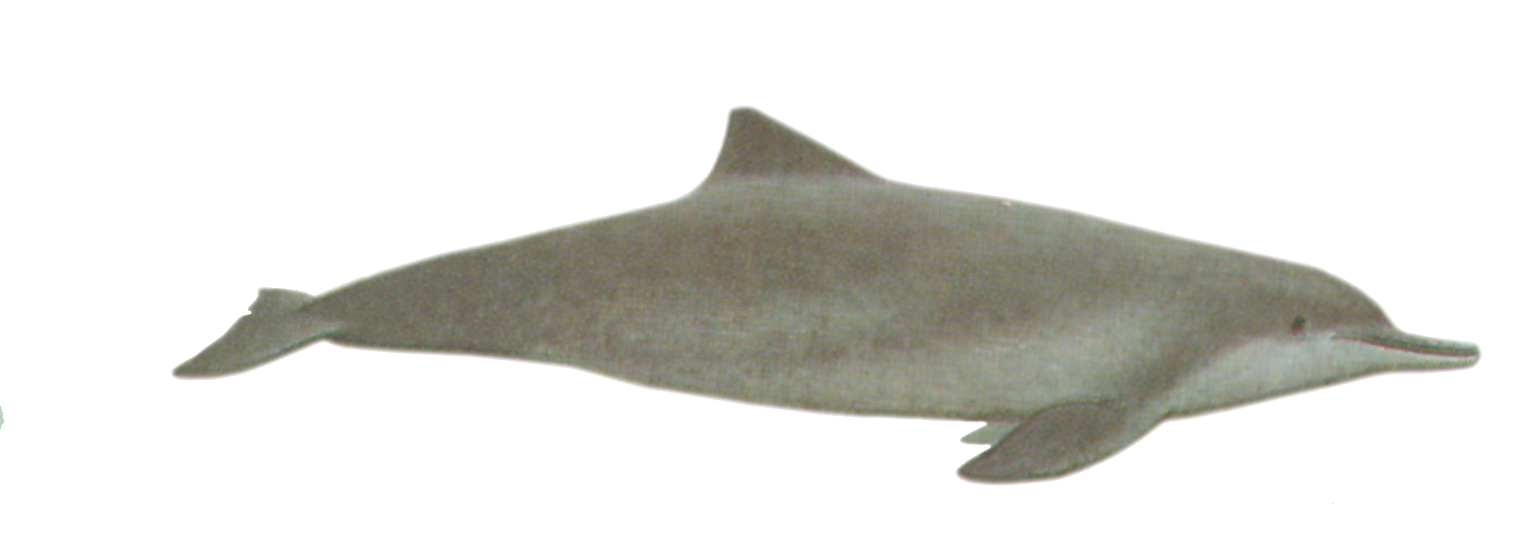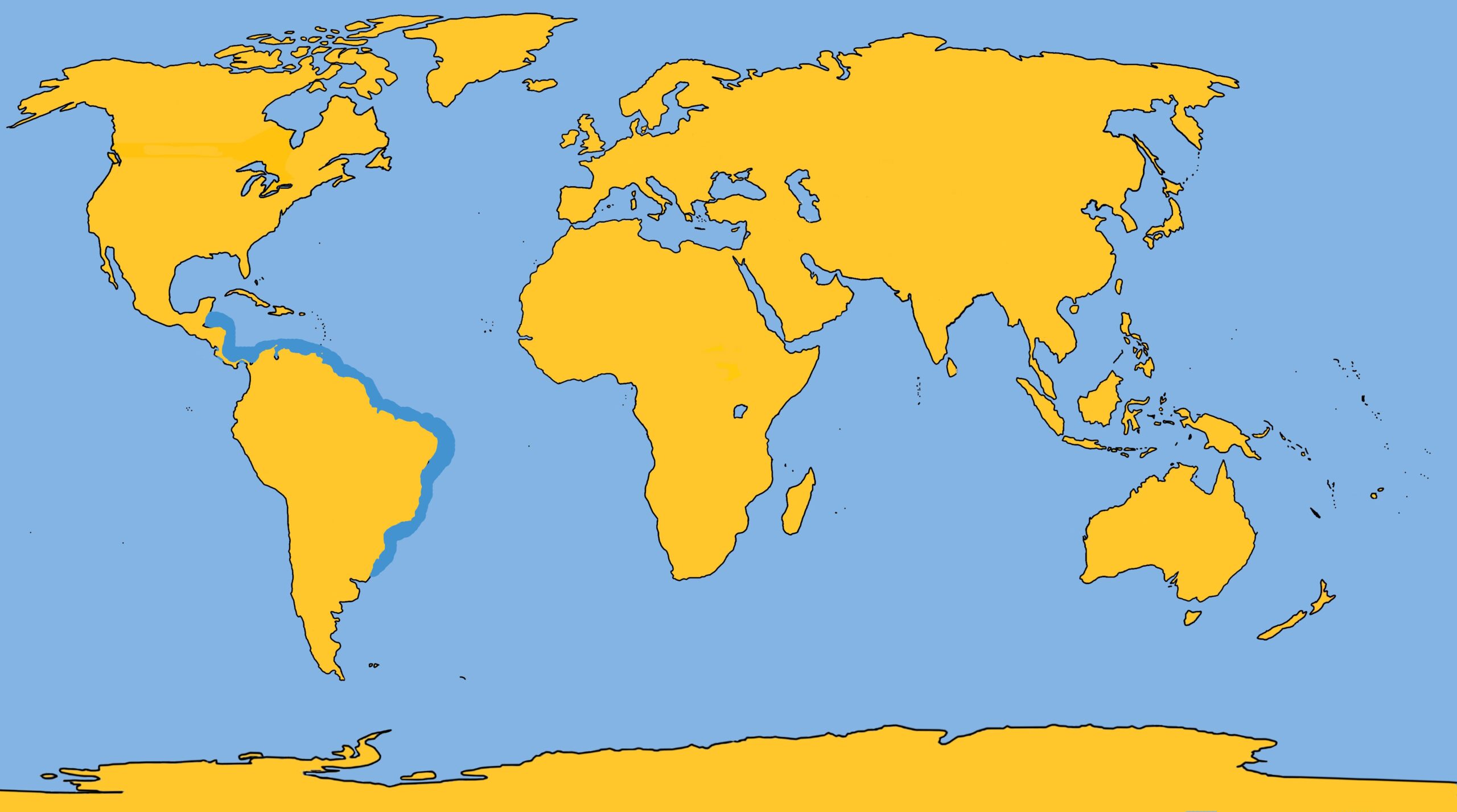Family: Delphinidae
Genus: Sotalia
Species: S. fluviatilis (Gervais, 1853)
This, the smallest of all cetaceans, is a fluvial animal, inhabiting coastal regions near the mouths of rivers and advancing into such rivers as the Amazon and Orinoco. It does not possess the long, narrow beak and paddle-shaped flippers associated with river dolphins, but looks more like the much larger bottlenose dolphin. The animal’s distribution appears to have something to do with its color, since the clear-water fluvial populations are somewhat darker than the cloudy-water Amazon populations.
Physical Description: As noted, the body shape is similar to that of the bottlenose dolphin. The animal possesses a thick, well-developed beak with pronounced demarcation from a sloping melon.
Color: The body is brown-gray overall, lightening to a cream color in the ventral region. The dark dorsal color extends down in a blade shape from the upper back on each side, disappearing near the anus. All fins are the color of the dorsal region.
Fins and Flukes: The well-developed dorsal fin is falcate, pointed at the tip, and located on the mid-back region. The flippers are broad and pointed, while the flukes are thin, broad, rounded at the tips, and possess a well-defined median notch.
Length and Weight: These animals reach a length of 6.25 ft (1.9 m) and a weight of between 70 and 80 lb (32 and 36 kg).
Teeth: There are 26 to 35 teeth in each side of the upper and lower jaws.
Feeding: They take armored catfish and freshwater crustaceans.
Breathing and Diving: Those animals found in rivers are known to raise much of their head out of the water when breathing; short leaps from the water are not uncommon. Time underwater between blows averages about 33 seconds.
Mating and Breeding: Calves, 27 to 31 in (68 to 79 cm), black above and white below, have been observed between February and March. Gestation is believed to be 10 months.
Herding: They are solitary or travel in groups of 6 to 7.
Distribution: A very small population is found 1,200 mi (1,900 km) and farther up the Amazon River, where these dolphins swim with Amazon River dolphins. They are found along the coast of Surinam and other coastal regions of South America.
Migration: No significant or predictable migration has been observed.
Natural History Notes: These animals are comfortable in freshwater, brackish, and saltwater environments. The movements of animals found in rivers seem dependent on river conditions — drought and flooding.
TUCUXI DISTRIBUTION








